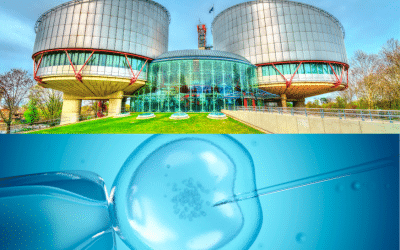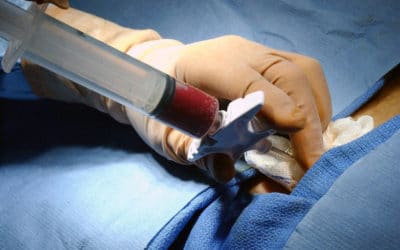A research team led by Alan Flake at Children’s Hospital in Philadelphia, has published results using a “sophisticated incubator” device.
Sophisticated incubators have been tested on extremely premature lambs to try to prolong gestation in a liquid environment. The device consists in a “closed circuit” system to limit the risk of infection, and mimics a prenatal amniotic fluid-filled environment. The premature lambs were delivered by C-section at 15 -16 weeks gestation, and then placed in the incubator, composed of a transparent, closed bag. The animals’ umbilical cords are connected to a machinery enabling fluid and gas exchanges (a sort of artificial womb) whereby oxygen levels can also be measured. « Blood flow is driven exclusively by the animal’s fetal heart, which eliminates harmful overpressure. It was a surprise for us to observe the quality of the animals’ physiological response. The fetuses auto-regulate the circulation” explains Emily Partridge, author of the Nature Communications article. Some of the lamb preemies survived and continued to live “ex-utero” for 4 weeks. When the lambs were removed from their protective bags the researchers observed their ability to breathe autonomously, before performing euthanasia to analyze their organs, especially their lungs and brains, since these are the organs which are most affected in cases of extreme prematurity. These organs were in a state equivalent to that of a fetus at the same stage having undergone normal gestation.
This is not the first time this type of experience has been carried out, but it does mark the first time that an external device has been able to maintain vital functions and ensure the animal’s fetal development for such an extended time period.
The initiating researcher explains that the objective is to continue his research to develop an incubator that most closely mimics a womb physiologically, thereby increasing the survival rate in extremely premature babies, and without sequelae. The research scientists estimate the gestational phase of these lambs to be equal to that of 22-24 weeks in human fetuses. Professor Alan Flake states that the next step will consist in adapting the system for premature human babies. According to this fetal surgeon « clinical trials could start within the next 5 years. In the next 10 years, it might become standard practice to place extremely premature babies in an artificial womb for a month, before they are moved to traditional incubators at approximately 28 weeks.”
Blanche Streb, Alliance VITA’s research director states:
« It is complicated, stressful and sometimes hazardous to handle the numerous and complex cases of premature babies in neonatal intensive care units (NICU). An experienced and dedicated staff as well as sophisticated care and equipment are required for the care of these extremely premature babies. Yet it is blatant that the closeness and proximity with their parents is essential for these infants. Thus, commendable efforts have been made to try to improve their comfort, their chance of survival, and give hope of limiting the possible sequelae resulting from prematurity. In this experiment, the lung development of a lamb or of a human is not a sufficient enough criteria to ‘compare’ the progress of human pregnancy to animal gestation. Besides numerous human physiological characteristics, the psychological impact cannot be ignored. This experiment focuses on the last phase of pregnancy, starting from a viable fetal phase. This is a far cry from producing an artificial womb whereby a baby could be taken care of throughout an entire pregnancy. But these studies are heading in that direction and bring up the question of establishing the boundary line between healthcare and therapeutic obstinacy. Research studies to improve care for extremely premature babies could be used for far less noble purposes: “creating an artificial womb”.
According to Henri Atlan, who authored a book on this subject, “this is not an artificial womb in the sense where the entire pregnancy would take place ex- utero. It is rather an improved incubator for extreme premature infants.” In his opinion “we have to be careful of any relentless reproductive obstinacy” and have enough experience with full-grown adult animals before possibly starting human clinical tests.



